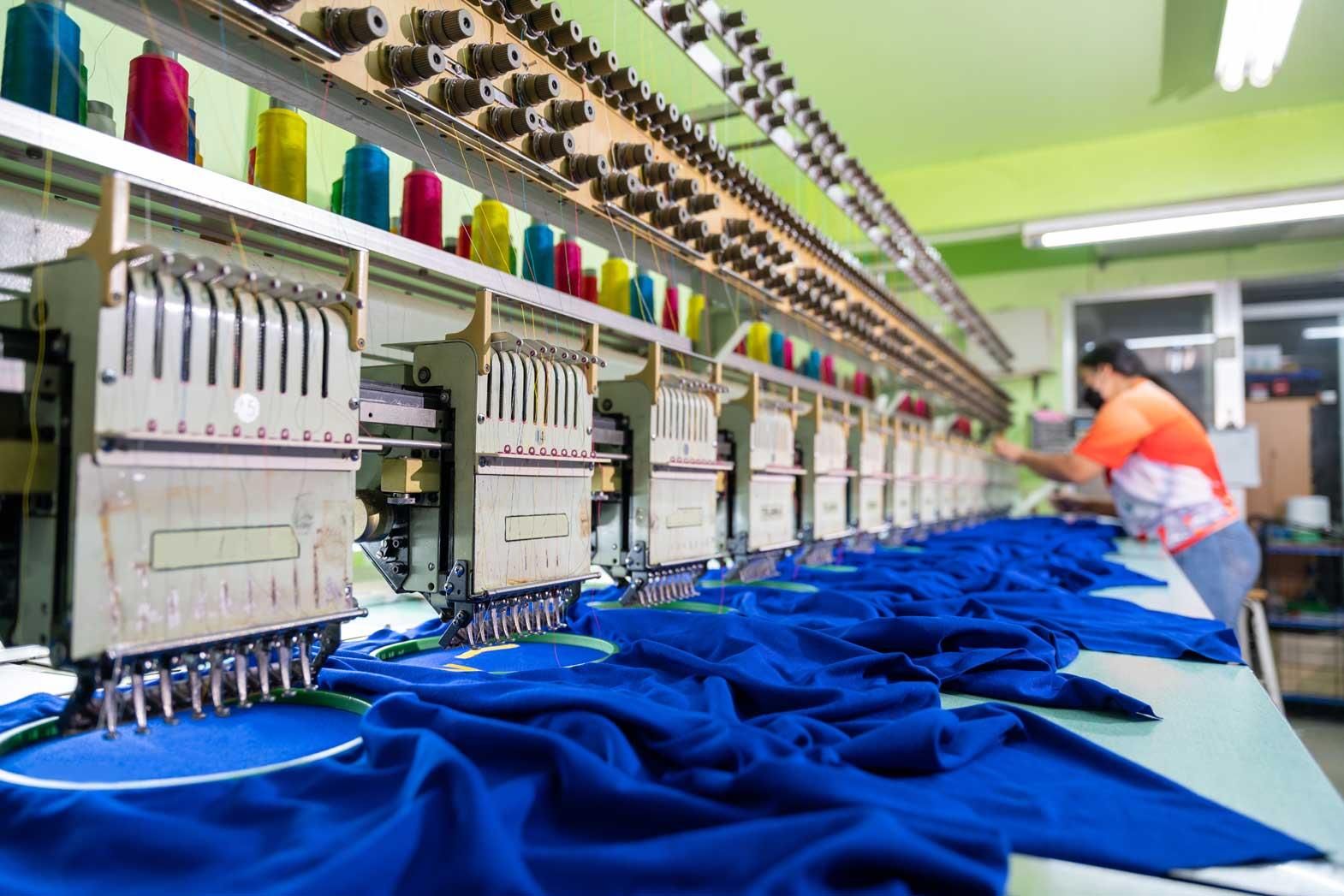Thailand has a fullyintegrated textile industry with its many weaving, spinning, and garmententerprises.
Thewestern world has dominated the textile and apparel industry ever since the1800s, but if businesses have tried to ignore the eastern hemisphere, they havebeen doing that at their own peril.
One of themajor players to emerge in the non-western world on the textile and apparelfront is Thailand. The country has more than 2,000 garment companies and aboutthe same number of firms flourishing in the textile industry, most of themlocated around Bangkok and in eastern Thailand.
Comprehensive structure
Industryin Thailand is proficient in producing fabric, sportswear, casualwear, kidswearand womenswear. The force behind the industry lies in the cluster of thecountry's textile sector, making it one of the few countries to handle allaspects from production, design and sale to home textiles. Thailand is aworld-renowned silk producer and also produces spin or twist yarn. The countryexcels in eco-friendly finishing, dyeing, and printing services which meetglobal standards. However, the country has to deal with some issues.
Imports offsetting exports lead
Thailand'sgarment industry supports anywhere between 800,000 to 1 million employees,while the textile industry employs 200,000 people, making these two industriesthe second-most important employment sector in the country. While Thailandseems to be a robust place to support a huge population working in the textilesector, the major disadvantage is that it has to rely heavily on imports ofcotton, yarn and fabric to produce textiles and garments.
In 2014,Thailand exported US$ 7.52 billion of garments and textiles, according to WITSdata. Of that, US$ 3.42 billion of textiles and clothing were exported to eastAsia and the Pacific, while US$ 1.24 billion worth of material was shipped tothe United States of America. According to Thaitradeusa.com, apparel forms 90per cent of the exports, followed by brassieres and other types of clothingitems. But these top export numbers are offset by imports worth US$ 4.71billion made in 2014. Again, most imports were made from east Asia and thePacific market. China is a major purchasing market for textiles.
Why this imbalance?
Thailand's economy is not yet in a favourable place, in comparison withother Asian giants like China and India. So, its people seem to have lesspurchasing power. The lack of domestic purchasing power directly results inweak domestic demand, one of the reasons Thailand has to scour foreign marketsto sell its textile and apparel products. Another reason that weakensThailand's position is the scarcity of raw material. For example, Thailand'stextile industry needs about 500,000 tonnes of cotton, but it only produces twoper cent of the raw cotton it uses.
What is Thailand aiming at?
Thailand
targets the United States of America, Japan and the United Kingdom to export
most of its garments. It is also eyeing the Russian market. The garment
industry is expanding its footprint globally, while the government is trying to
become more involved with the industry by providing export credits and
development of vocational training. The private sector has partnered with the
government to boost innovation in the textile industry and to bring in modern
technology into weaving, finishing, printing, knitting and dyeing. The focus is
on modernising technology for greater efficiency, as well as improving skills
of people working in the sector and competence of the businesses in the textile
and apparel industry.
Looming threats
What
proves to be an advantage to Thailand is its strategic location to become a
distribution centre in the Association of Southeast Asian Nations (ASEAN).
However, with globalisation comes the risk of global competition, different
trade blocks and group agreements. The implementation of ASEAN Economic
Community at the end of 2015 could bring advantages and disadvantages. The deal
could shift production capacity to low-wage countries and at the same time
value-added products could develop in new markets, posing problems for the Thai
textile and apparel industry.
One of the
major competitors could be Myanmar, after it came under the generalised system
of preferences of the European Union in 2013. Cheap labour in countries like
India, China, Vietnam, Indonesia and Pakistan could challenge Thai industry.
Another basic problem lies within the country. The younger generation in
Thailand does not want to enter labour intensive industries. An executive
director at the Thai Garment Manufacturers Association said the problem is not
related to minimum wage but shortage of workers. As the gap widens, some local
garment manufacturers are shifting their operations to Myanmar, Cambodia and
other ASEAN countries, the director said.
High fashion appeal
The
broader fashion industry in Thailand is blossoming, as showcased in the 33rd
Bangkok International Fashion Fair held in 2015. Over 500 companies
participated, up 17.5 per cent from the previous year. Young Thai fashion
designers presented their collections with the aim of attracting international
clients. "Sixty per cent of my clients are from overseas, mostly from
Japan, Malaysia and Austria," a Bangkok designer was quoted as saying by
Horizon Thailand. "The fashion industry in Thailand is growing; the young
generation is more interested in fashion than ever. The feedback that I get
from the (Bangkok International Fashion Fair) has been better and better every
year," the designer is quoted.
Despite
various threats jeopardising market deals and domestic issues, Thailand is set
to create its own niche in the textile and apparel markets, complemented by the
country's growing retail sector.
References:
1) WITS
2) Just
Style
3)
Thaitradeusa.com
4)
Textination.de
5)
Livingwagenow.eu
6)
Cleanclothes.org
7)
Thailandhorizon.com
8) World Bank









Comments